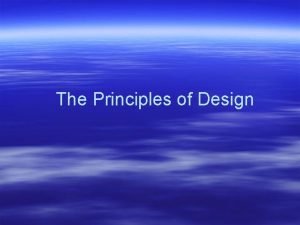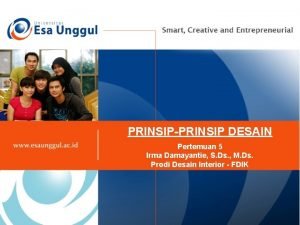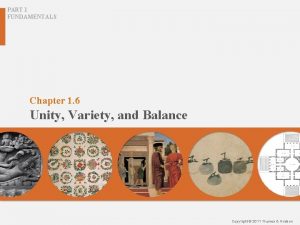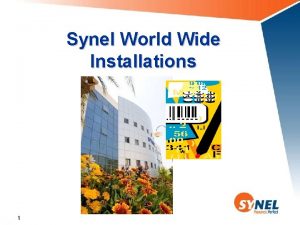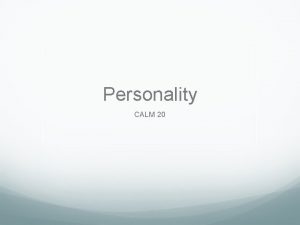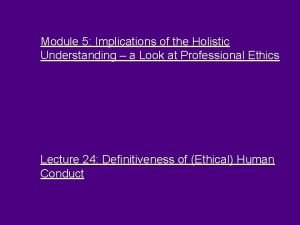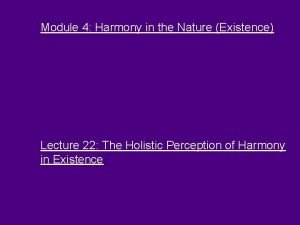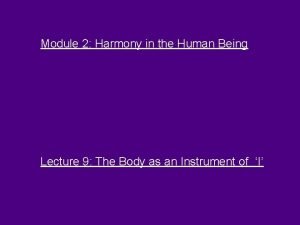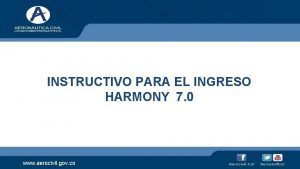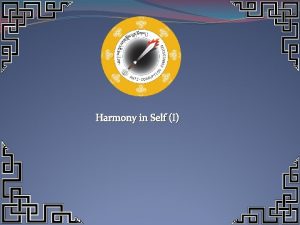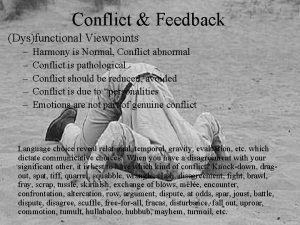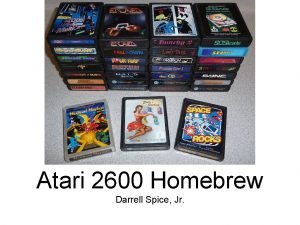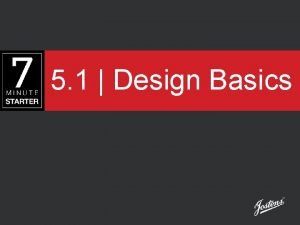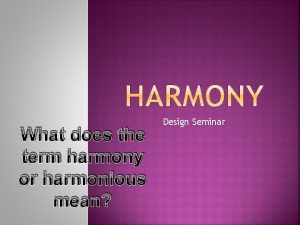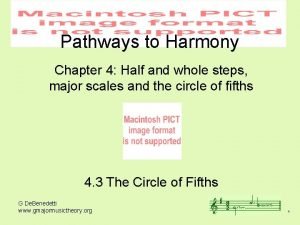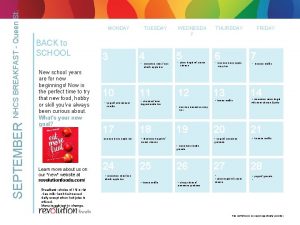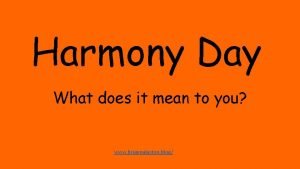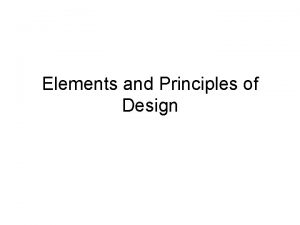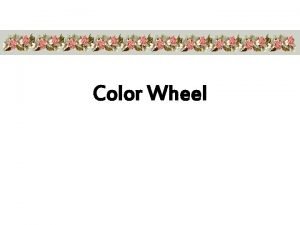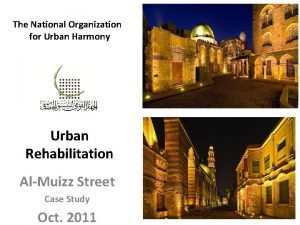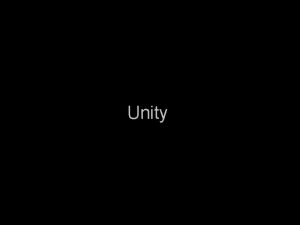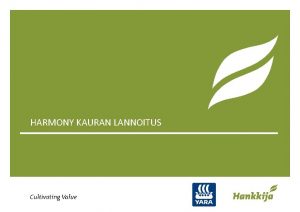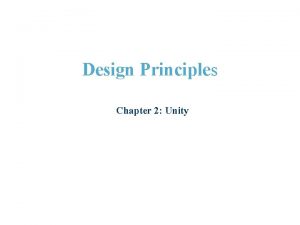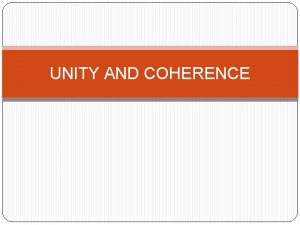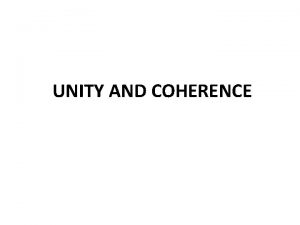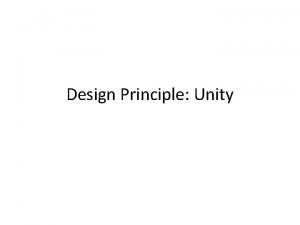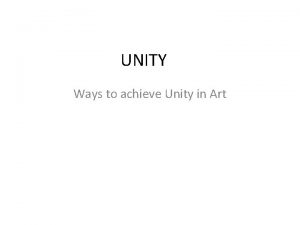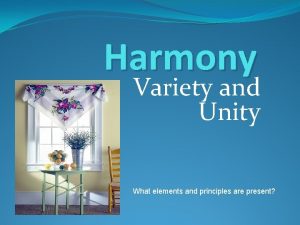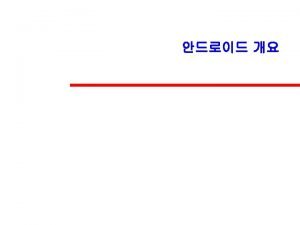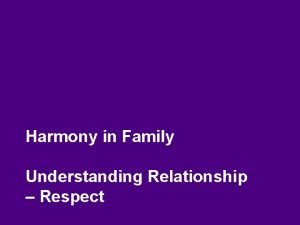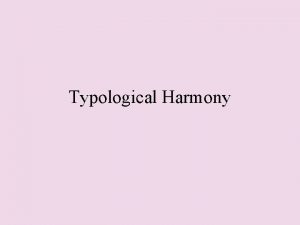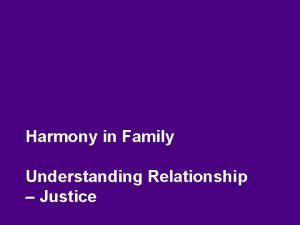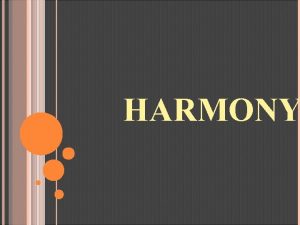Introduction Harmony Unity When elements in an image





















- Slides: 21

Introduction: Harmony Unity – When elements in an image look as though they belong together. s Unity is synonymous with Harmony. s Unity can exist with either representational imagery or abstract forms. Representational – Images that look like something that actually exists. Wayne Thiebaud. Paint Cans. 1990. Lithograph, hand-worked proof, 75. 7 58. 8 cm. De. Young Museum (gift of the Thiebaud Family, 1995. 99. 12). Art ゥ Wayne Thiebaud/Licensed by VAGA, New York.

Creating Unity s Unity is created by repetition of similar shapes, lines, patterns and colors. s When you do this it creates forms that are repetitive, further enhancing the feel of unity. s An image that is monochromatic is one way to create a sense of unity. Damon Winter, personal photograph from Iceland, Communication Arts, May/June 2005.

Visual Unity “The whole must be predominant over the parts. You must first see the whole pattern before you notice the individual elements. ”

Exploring Visual Unity Collage - An artwork created by assembling and gluing a variety of materials onto a twodimensional surface. Karl Blossfeldt. Pumpkin Tendrils. Works of Karl Blossfeldt by Karl Blossfeldt Archive. Ann and Ju rgen Wilde, eds. , Karl Blossfeldt: Working Collages (Cambridge: MIT Press, 2001), p. 54.

Intellectual Unity vs. Visual Unity Intellectual unity – elements have common theme; they have unity of idea. Example: a scrapbook page. It is unified by theme but not by visual composition.

Visual Unity Visual unity – elements have a similarity to the eye. Similar shape, size, etc… s The designer creates unity for the viewer. s They create a pattern of similar shapes, lines, and colors that help organize the idea or ‘Intellectual unity’ into visual unity. s The viewer is instinctively looking for visual organization and patterns.

Example: Visual Unity Hoefler & Frere-Jones. Sentinel Font.

Visual Perception: Gestalt – theory of visual psychology, or the study of perception. s The viewer tends to group objects that are close to one another into a larger unit. s The viewer will also tend to group like objects. s Negative (or empty) space also seems to be clearly organized.

How We See Unity: s Our brain looks for similar elements s We group objects of similar shape together s And try to make them into something else.

Ways to Achieve Unity: Proximity – Make separate elements look as if they belong together by putting the elements close together. s Simplest way to achieve unity Example: We use proximity to create words. If the letters of a word are far apart it becomes very difficult to read.

Ways to Achieve Unity… Repetition - Repeat design elements to create harmony. Repeat: s Color s Shape s Texture s Direction s Angle Sophie Taeuber-Arp. Composition with Circles Shaped by Curves. 1935. Gouache on paper, 1' 1 ⁄ ” x 10 ⁄ " (35 x 27 cm). Kunstmuseum Bern (gift of Mrs. Marguerite Arp-Hagenbach).

Example: Joe Miller’s Design Co. Logo design for space 47. 47 East William Street, San José, California 95112.

Unity with Variety The Grid s Was used by The Masters s Start by drawing a series of lines to create a format or template. “A point to remember is that, with a great deal of variety of elements, a simple layout idea can give needed unity. ”

The Grid A series of vertical and horizontal lines on a page. (Think of graph paper. ) s You can use a grid to create similarity between pages s You can control spacing within units

Unity with Variety – The Grid The image is organized in a grid, but each design is unique. Awa Tsireh. Animal Designs. c. 1917ミ 1920. Watercolor on paper sheet, 1ユ 81/16モ 2ユ 21/8モ (50. 9 66. 2 cm). Smithsonian American Art Museum Washington, D. C. , Corbin-Henderson Collection (gift of Alice H. Rossin).

Varied Repetition Adds Interest: Elements that can be repeated and varied to create unity: s Curves s Columns s Size s Shapes Eva Zeisel. Classic Century: oil pourer, sauce boat, salt and pepper. Ceramic. Produced by Royal Stafford, England.

Emphasis on Unity The ‘rules’ in design are not rigid on the use of unity and variety. There are countless ways to achieve them – all that is required is experimentation.

Example: Unity through Repetition Loretta Lux. Sasha and Ruby. 2005. Ilfochrome print.

Emphasis on Variety Use variety in: s Form s Size s Color s Gesture Life is not always orderly or rational. Elizabeth Murray. Painter’s Progress. Spring 1981. Oil on canvas, 19 panels, 9' 8” x 7' 9". Acquired through the Bernhill Fund and gift of Agnes Gund (271. 1983. a-s) Location: The Museum of Modern Art, New York.

Chaos and Control “Without some aspect of unity, an image or design becomes chaotic and quickly unreadable. Without elements of variety, an image is lifeless and dull and becomes uninteresting. ”

s A conflicting jumble of graphic images causes overload and leaves us confused by chaos. s Your eyes cannot focus on any one thing. Signs create a visual clutter along old Route 66 in Kingman, Arizona.
 Starry night harmony unity and variety
Starry night harmony unity and variety Prinsip variety adalah
Prinsip variety adalah Unity introduction
Unity introduction Bank hapoa
Bank hapoa Harmony seeker meaning
Harmony seeker meaning What is harmony
What is harmony Holistic understanding of harmony on professional ethics
Holistic understanding of harmony on professional ethics Understanding harmony in the nature and existence
Understanding harmony in the nature and existence Harmony in human being
Harmony in human being Metron harmony
Metron harmony How can we ensure harmony in self (‘i’)
How can we ensure harmony in self (‘i’) Harmony is normal and conflict is abnormal
Harmony is normal and conflict is abnormal Atari harmony
Atari harmony Proximity and harmony
Proximity and harmony What does harmony mean
What does harmony mean Harmony hui
Harmony hui Pathways to harmony chapter 1 answers
Pathways to harmony chapter 1 answers Harmony nhcs
Harmony nhcs What does this mean
What does this mean The feeling of harmony between all parts of the artwork
The feeling of harmony between all parts of the artwork Light colour wheel
Light colour wheel National organization for urban harmony
National organization for urban harmony
